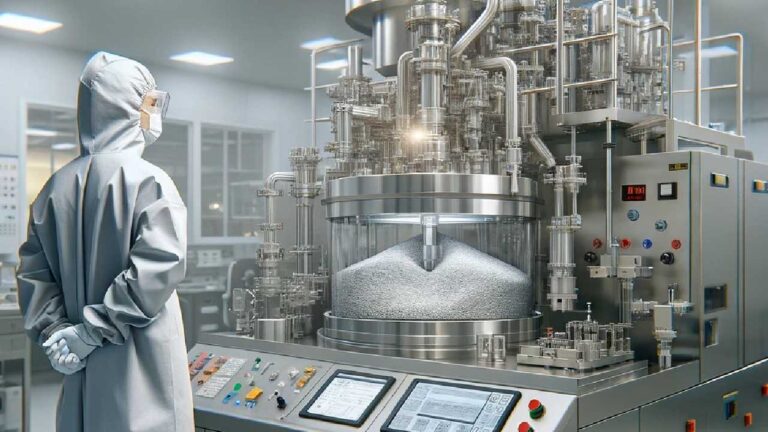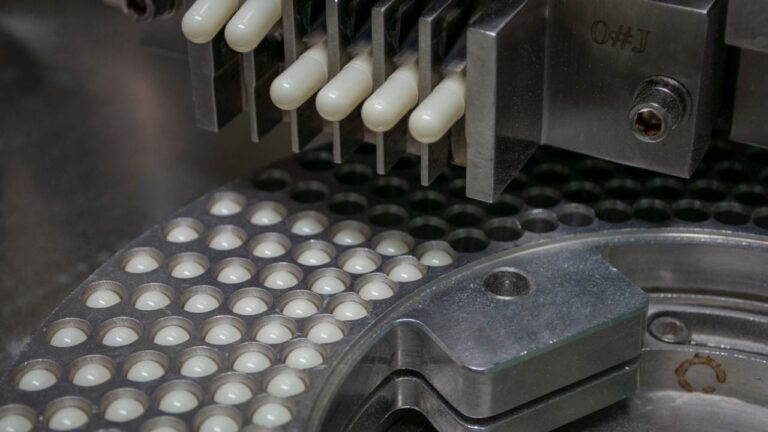
The pharmaceutical industry is a cornerstone of modern healthcare, providing innovative solutions to an array of medical challenges. The journey from a promising compound to a market-ready drug is intricate and multifaceted, involving a series of meticulously regulated phases. Each phase of drug development is important, from the initial discovery and development to the rigorous clinical trials and the eventual commercial production. Understanding these phases is essential for professionals in the pharma industry, as it enables them to navigate the complex landscape of drug development and ensure the delivery of safe, effective, and high-quality medications.
In this article, we will discuss the different phases of drug development, offering insights into the processes that transform scientific discoveries into life-saving treatments.
Meaning of Drug Development
Drug Development includes the entire process of producing pharmaceutical products, from the initial synthesis of active pharmaceutical ingredients (APIs) to the formulation of these compounds into final dosage forms, such as tablets, capsules, injectables, or topical preparations.
It involves a series of carefully controlled and regulated steps, including drug discovery, development, clinical testing, and approval. The goal of drug development is to create medications that are safe, effective, and of consistent quality.
This process requires collaboration among scientists, engineers, regulatory experts, and quality assurance professionals to ensure that each product meets stringent standards set by health authorities. Ultimately, drug development plays a pivotal role in transforming scientific innovations into accessible treatments for patients worldwide.
What are the Different Phases of Drug Development?
Drug Development is a complex and multifaceted process that unfolds across several distinct phases. Each phase plays an important role in ensuring the safety, efficacy, and quality of pharmaceutical products. These phases include:
Phase 1: Drug Discovery and Development
The journey of drug development begins with the discovery and development phase. This initial stage is focused on identifying potential therapeutic targets and finding compounds that can interact with these targets to treat or prevent disease.
The process starts with extensive research to understand the biological mechanisms underlying a specific medical condition. Scientists use various techniques, such as high-throughput screening, to test thousands of compounds for their ability to modulate the activity of the target.
Once a promising compound, often referred to as a ‘lead compound,’ is identified, it undergoes a series of optimization processes to enhance its efficacy, selectivity, and safety profile. This involves modifying the chemical structure of the compound to improve its pharmacological properties.
Simultaneously, preclinical studies are conducted to evaluate the safety and efficacy of the lead compound in animal models. These studies provide important data on the compound’s pharmacokinetics (how the drug is absorbed, distributed, metabolized, and excreted in the body) and pharmacodynamics (the drug’s effects on the body).
The successful completion of this phase leads to the filing of an Investigational New Drug (IND) application with regulatory authorities, seeking approval to proceed to clinical trials in humans. The capitalized research and development (R&D) cost required to bring a new biopharmaceutical to market has risen notably over recent decades. For instance, this cost escalated from $1.2 billion in 2007, with an average success rate from Phase I to approval of 30%, to $2.8 billion in 2016, with average success rates during this phase reduced to 12%.
Phase 2: Preformulation and Formulation Development
After a drug candidate successfully passes the discovery and development phase, it enters the preformulation and formulation development stage. This phase is critical in determining the physical and chemical properties of the drug substance, which will influence its formulation and delivery method.
Preformulation studies involve a comprehensive analysis of the drug’s characteristics, such as solubility, stability, and compatibility with excipients (inactive ingredients). These studies help in understanding how the drug behaves under various conditions and in identifying potential challenges in its formulation.
Based on the findings from pre-formulation studies, formulation development begins. The goal is to design a dosage form that ensures the drug is delivered effectively to the intended site of action, with the appropriate release profile and maintains its stability and integrity throughout its shelf life. Common dosage forms include tablets, capsules, injectables, and topical creams.
Formulation scientists work on optimizing the formulation to enhance the drug’s bioavailability, minimize side effects, and improve patient compliance. This may involve developing controlled-release formulations, optimizing the particle size, or selecting suitable excipients.
The final formulation undergoes rigorous testing to ensure it meets all quality specifications and regulatory requirements. Once the formulation is finalized, the drug moves on to the process development and scale-up phase, where manufacturing processes are optimized for large-scale production. To ensure market success each year with an overall clinical success rate (Phase I to approval) of ~12%, a biopharmaceutical company needs to allocate process development and manufacturing budgets of approximately $60 million for pre-clinical to Phase II material preparation and $70 million for Phase III to regulatory review material preparation. For diseases like Alzheimer’s, with lower overall clinical success rates of ~4%, these values increase to approximately $190 million for early-phase and $140 million for late-phase material preparation
Phase 3: Process Development and Scale-Up
Following successful formulation development, the drug development process advances to the process development and scale-up phase. This stage is important for translating laboratory-scale processes into scalable, industrial-scale operations. The primary goal is to develop a robust, efficient, and cost-effective manufacturing process that can produce the drug in large quantities while maintaining its quality and consistency.
Process development involves optimizing various parameters such as reaction conditions, purification methods, and equipment selection. Scientists and engineers work collaboratively to ensure that the process is reproducible and can be controlled effectively. They also focus on minimizing waste and ensuring environmental sustainability.
Scale-up is a critical step where the manufacturing process is incrementally increased from pilot scale to full production scale. This requires careful consideration of factors such as mixing times, heat transfer, and equipment sizing to ensure that the product’s quality attributes remain consistent across different scales.
Throughout this phase, rigorous testing and validation are conducted to confirm that the scaled-up process meets all regulatory and quality standards. This includes validating the equipment, processes, and analytical methods used in manufacturing. Successful completion of this phase leads to the production of clinical trial batches and, eventually, commercial-scale batches of the drug.
Phase 4: Clinical Trials and Regulatory Approval
The clinical trials and regulatory approval phase is a critical stage in drug development, where the safety and efficacy of the drug are rigorously tested in human subjects. Clinical trials are conducted in phases:
- Phase I: The drug is tested in a small group of healthy volunteers or patients to assess its safety, tolerability, and pharmacokinetics.
- Phase II: The drug is given to a larger group of patients to evaluate its efficacy and further assess its safety.
- Phase III: The drug is tested in a larger population to confirm its efficacy, monitor side effects, and compare it with standard treatments.
Successful completion of these phases provides the necessary data to file a New Drug Application (NDA) or Biologics License Application (BLA) with regulatory authorities such as the FDA. The application includes all data from preclinical and clinical studies, manufacturing information, and proposed labeling.
The regulatory review process involves a thorough evaluation of the submitted data to ensure that the drug is safe and effective for its intended use. This may involve advisory committee meetings and additional data requests. If the drug meets all regulatory requirements, it receives approval for marketing.
Post-approval, the drug enters Phase IV clinical trials or post-marketing surveillance, where its long-term safety and effectiveness are monitored in a larger, more diverse population. This phase also assesses the drug’s real-world effectiveness and identifies any rare or long-term side effects. Regulatory authorities may require additional studies or post-marketing commitments to ensure the continued safety and efficacy of the drug.
Phase 5: Commercial Manufacturing and Quality Control
Upon receiving regulatory approval, the drug enters the commercial manufacturing phase, where it is produced on a large scale for distribution and sale. This stage requires adherence to Good Manufacturing Practices (GMP) to ensure the consistent quality and safety of the drug. GMP regulations cover all aspects of production, including raw material sourcing, equipment maintenance, employee training, and record-keeping.
Quality control is a critical component of commercial manufacturing, involving rigorous testing of the drug at various stages of production to verify its identity, strength, purity, and potency. QC measures also include environmental monitoring, in-process controls, and stability testing to ensure the drug remains effective and safe throughout its shelf life.
Quality assurance systems are implemented to oversee the entire manufacturing process, ensuring compliance with regulatory standards and identifying any deviations or issues that may arise. QA involves regular audits, validation of processes and equipment, and continuous improvement initiatives to enhance product quality and manufacturing efficiency.
Phase 6: Post-Market Monitoring and Pharmacovigilance
Even after a drug has been approved and launched in the market, its safety and efficacy continue to be monitored through post-market surveillance and pharmacovigilance programs. These initiatives aim to detect and assess any adverse effects or unexpected safety concerns that may arise from the drug’s widespread use.
Pharmacovigilance involves collecting, analyzing, and reporting data on adverse drug reactions (ADRs) from healthcare professionals, patients, and other sources. This information is used to update drug labeling, issue safety alerts, and, in some cases, lead to the withdrawal of a drug from the market if significant risks are identified.
Regulatory authorities, such as the FDA and EMA, require pharmaceutical companies to submit periodic safety reports and implement risk management plans to minimize potential risks associated with their drugs. An examination of 50 New Drug applications (NDAs) approved in 2010–2016 revealed that on average, each NDA implemented 12.6 in-process controls and 11.3 workups during drug substance manufacturing. Post-market studies and registries may also be conducted to gather additional data on the drug’s long-term safety and effectiveness in real-world settings.
What are the Key Differences Between The Various Phases of Drug Manufacturing?
The key differences between the various phases of drug manufacturing lie in their objectives, activities, and outcomes:
- Drug Discovery and Development: Focuses on identifying potential drug targets and lead compounds, optimizing their properties, and evaluating their safety and efficacy in preclinical studies.
- Preformulation and Formulation Development: Involves studying the physical and chemical properties of the drug substance to develop a suitable dosage form that ensures stability, bioavailability, and patient compliance.
- Process Development and Scale-Up: Aims to translate laboratory-scale processes to industrial scale, optimizing manufacturing procedures to ensure consistency, efficiency, and compliance with regulatory standards.
- Clinical Trials and Regulatory Approval: Involves testing the drug in human subjects across multiple phases to assess its safety and efficacy, followed by submitting data to regulatory authorities for approval.
- Commercial Manufacturing and Quality Control: Entails large-scale production of the approved drug while adhering to Good Manufacturing Practices (GMP) and implementing quality control measures to maintain product standards.
- Post-Market Monitoring and Pharmacovigilance: Focuses on monitoring the drug’s safety and efficacy in the general population after its release to the market, identifying any adverse effects or long-term risks.
Drug Development & manufacturing is a complex and critical process that encompasses multiple phases, each with its unique challenges and objectives. From the initial discovery and development of a potential drug to its formulation, scaling, clinical testing, regulatory approval, and eventual commercial production, every stage is essential in ensuring the safety, efficacy, and quality of pharmaceutical products. Moreover, post-market monitoring and pharmacovigilance play a vital role in maintaining the drug’s safety profile once it is available to the public.
Final Words
Drug manufacturing is a complex and critical process that encompasses multiple phases, each with its unique challenges and objectives. From the initial discovery and development of a potential drug to its formulation, scaling, clinical testing, regulatory approval, and eventual commercial production, every stage is essential in ensuring the safety, efficacy, and quality of pharmaceutical products. Moreover, post-market monitoring and pharmacovigilance play a vital role in maintaining the drug’s safety profile once it is available to the public.





